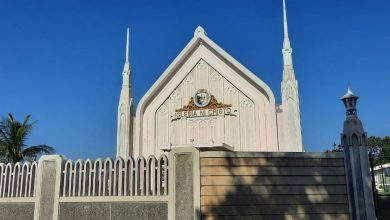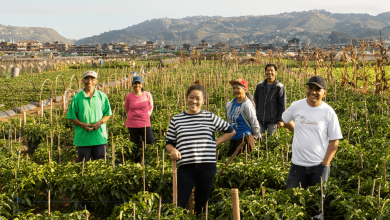
Reimagining our Rivers and Esteros
This speculative piece is inspired by the work of Palafox Associates, particularly their “Postcards from the Future” for our country’s different waterfronts. The point of reimagining our rivers and esteros is for us to rethink the purpose of these waterways in our lives. It’s not just about rehabilitating them and making them look pretty. It’s also about exploring just how much better our lives could be. Who knows – maybe this can be what we make of our future…
Nothing beats walking down the estero after a long day at work.
I’m lucky because my office window looks out the Estero de San Miguel, with its tree-lined banks and serene waters. I look at it when the stress becomes unbearable, and I am reminded of just how lucky I am to be working in this part of town.
6:15 p.m. – Estero de San Miguel
On this cool Friday evening, I walk along the familiar pathways out my office building and into the residential parts of the estero. Children are running around – a familiar sight in these parts. The more daring ones are jumping into the flowing waters, laughing and cheering and splashing. The water looks cool; I am half tempted to jump in myself, but I do not have a change of clothes.
My lolo used to live in these parts. He said it was full of rickety shanties back in his day, and the river smelled foul and dead. Curious, how just a few decades ago, the term estero was synonymous to decay. As the sun is setting, the waters of the Estero de San Miguel are glistening, and the air is filled with the laughter of children diving into the vibrant and clear waters.
I cross the bridge to catch the next ferry to Binondo, purposefully avoiding my favorite fishball stand under the narra on the opposite end of the estero. Marie is going to kill me if I ruin my appetite again before dinner.
7:30 p.m. – Ongpin Docks
The banks of the Estero de la Reina have always been a curious sight. Crossing the Pasig River, busy with cargo ships and the main ferry lines, this estero has always been one of my favorites. Its banks are clean and lush, contrasting deeply with Binondo’s busy streets and pavements. And on this beautiful Friday night, couples sprawled across the grass are next to families watching over their children wading in the estero. I am regretting not bringing a change of clothes more and more, as the water looks cool and inviting.
I see Marie on her favorite bench a few meters down Ongpin Street’s dock. She’s feeding the ducks again, and laughs as they scatter as a young boy runs towards them. She sees me approaching, so she gathers her things and walks towards me.
“Hoy gutom na ako,” she says, beaming. “Akala ko nag swimming ka na naman ng wala ako.”
“Hindi ah, naiwan ko nga yung pampalit ko sa bahay eh,” I said, and I make a mental note to always bring an extra set of clothes at the office. “Tara na, gutom na rin ako.”
This estero, like other esteros, is bustling. The night has come alive, and the bistros are already setting up their tables by the banks. It’s hard to get a table at the many restaurants lining the Estero de la Reina; good thing I remembered to call in a reservation in advance this time.
8:26 p.m. – Pasig River
After a quick dinner by the banks – nothing beats a steaming bowl of beef mami as you watch the flowing waters of the estero – we walk back towards Ongpin to catch the ferry to San Juan. I remember Marie’s first month in Binondo; she went up the other side of Ongpin, and ended up riding the ferry to the Tullahan River instead. Now, she knows the routes that cut through and around the esteros by heart.
We intentionally rode the ferry that goes the long way through Pasig and into the San Juan tributary. It has always been a Friday night thing for us, to just enjoy the ride, the view, and each other’s company.
Pasig River’s beauty has always been breathtaking, with the streetlights and the docks and the bustling metro sprawling all around. I’ve always found the main ferry lines and the cargo ships gliding effortlessly though the river a stark contrast to the tiny boats the fishermen use to catch fish. It’s fascinating how full of life the river is, and how at all times of the day, there’s always something interesting that catches your eye.
My lolo told us old stories of how in his lolo’s childhood, people considered the Pasig “dead”. It’s unthinkable, as the Pasig is the lifeblood of Metro Manila. This river is the reason why I even got my current work in the first place. It’s a full-time job, managing the permissions for the cargo boats that ply through Pasig.
READ: Philippines of the Future – A Work in Progress
9:10 p.m. – San Juan River Tributary
Marie shows me photos of her recent trip to Pampanga, by the river. The steps up to the main thoroughfares are an interesting touch, I think.
She shows me more photos of us biking along the Marikina Riverbanks. I didn’t know she was taking pictures of me trying to avoid the hedges and the trees. One photo was of me almost falling off of the bike path straight into the water next to a surprised looking group of students aboard a raft. She laughs as I try to delete the photos on her phone.
The breeze is cool, and as the boats float lazily down Pasig and into San Juan, I think of one of my most cherished memories of my lolo. He was still able to stand up then, and he was on the bridge in Ermitaño Creek, fishing. Despite having caught several fish already, he was still at it.
He was staring off into the distance. He looked so peaceful, so content. His stories about the rivers and esteros have stopped being so bleak and drab, very much unlike the stories that his lolo told him. His stories are about children laughing and swimming. About romance blooming by the steady, flowing banks. About love and beauty, and about life.
How our beloved esteros could be anything other than the vibrant, beautiful places they are now, I shall never know.




